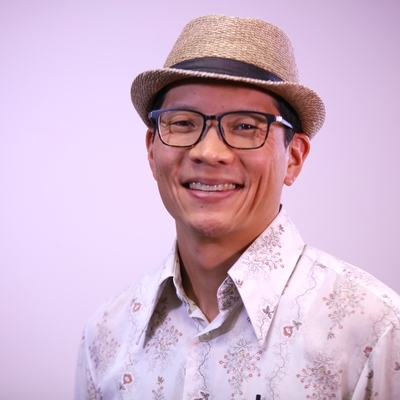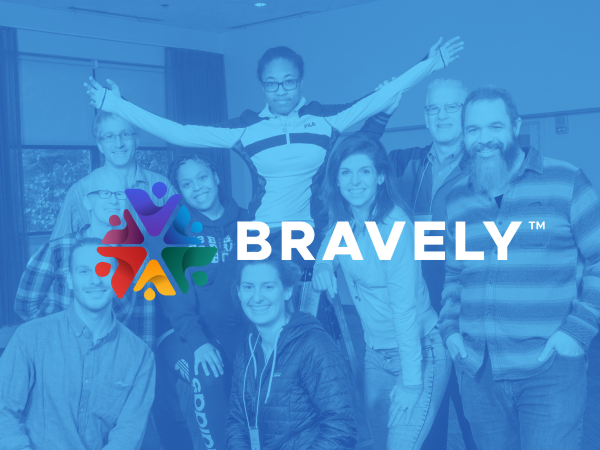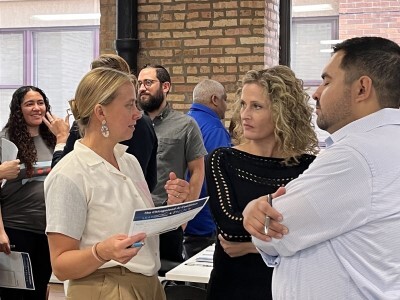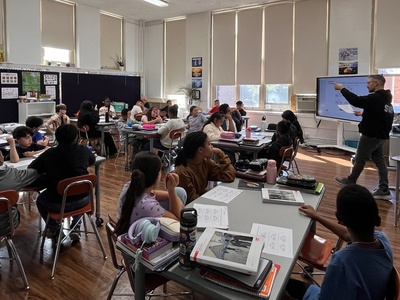Professional Learning
Three Ways to Build Trust and Strengthen Teacher PD
Topics
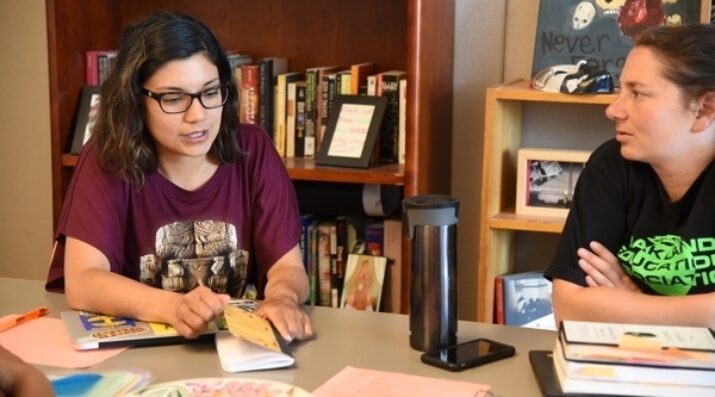
Educators are the lead learners in schools. If they are to enable powerful, authentic, deep learning among their students, they need to live that kind of learning and professional culture themselves. When everyone is part of that experiential through-line, that’s when next generation learning thrives.
When done well, professional development for teachers improves the quality of students’ learning experiences and boosts teacher retention.
When I meet teachers in the Oakland Unified School District (OUSD) for the first time, there is often a pause as they size me up. They typically ask, “Where did you teach?” And then, “How long did you teach?” What I really hear them asking is, “Can I trust you?”
As someone who leads professional development for teachers in OUSD, I have come to see trust as foundational. Students often refuse to learn from teachers that they don’t trust; the same is true for the adults.
Over the years, I have heard dozens of teachers complain about teacher professional development (PD). The very thing that is supposed to fuel their passion and fire for teaching is instead sucking the oxygen out of the profession.
Many teachers have had to sit through teacher “training” that falls into any number of pitfalls—the facilitator assumes a lack of expertise among teachers, is unresponsive to the needs of teachers, or poorly constructs the agenda, to name a few. These missteps can breed cynicism, frustration, and a lack of trust in teacher PD.
We need instead to create learning experiences that honor teachers’ precious time. When done well, teacher PD improves the quality of students’ learning experiences and boosts teacher retention. So, what does it take to be effective?
Trust comes first. And when it comes to building trust, I rely on these three actions:
- Lead collaboratively
- Prepare intensively
- Communicate relationally
When we facilitate teacher PD with trust in our minds and hearts, we also model for teachers how to build trust with their students.
Lead Collaboratively
An individual teacher always has the most expertise about their classroom. If the goal of PD is to help teachers improve their practice, it ultimately requires the teacher to bring together two things—new learning and their expertise on what works in their classroom.
Any powerful idea—project-based learning, student-led conferences, or close reading—is just an idea. Teachers ultimately transform these ideas, frameworks, and strategies into a learning experience for their students. As a PD facilitator, it’s important to lead collaboratively, to lead with respect for teachers’ expertise.
How? First, take the time to study the teachers’ context—spend time in their classrooms to get a sense of their strengths, challenges, and opportunities. Knowing this context will help you design teacher professional development that is responsive and relevant. It can also give you a chance to run your agenda ideas by a teacher for some real-time feedback.
Second, empower teachers to lead. When you look at your goals for a PD session, consider if a teacher might be better positioned than you to lead a particular section. Those of us who have left the classroom need a teacher’s expertise to bring fresh insights about implementation to our stale understandings. Current teachers are able to test new instructional ideas and share their insights with colleagues.
Third, give time in your agenda for teachers to translate new learning into their own practice. I try to reserve at least 50 percent of any session for teacher planning time. You show respect for teachers’ expertise by recognizing that new tools and strategies will require translation into the unique micro-culture of the teachers’ classroom.
Prepare Intensively
Even in content areas where I feel competent, I have found that I need 3-5 hours of preparation for every hour of facilitation. As an example, when my colleague Camrin Frederick and I prepare for the Graduate Capstone Learning Series, we usually do the following:
- Observe in classrooms to see where teachers are in their instruction and to check in with them about what they need
- Meet to identify professional goals for teachers and generate our focus for the session
- Meet again to draft an agenda and decide who is leading which parts.
- Then, we each plan our sections and come back together to make sure that we have a coherent plan.
- Finally, there’s logistics like location, food, communication, etc.
That’s easily 12 hours of planning for a 2.5 hour meeting. And that’s when I feel very familiar with the content!
I try to remember how I felt walking into a meeting at the end of a day of teaching. Sometimes, the first five minutes would sway me toward participation or toward grading student work. Being prepared with a well-constructed agenda is one clear way to signal to teachers that they can trust that this won’t be a waste of time.
Communicate Relationally
Design and preparation are key to building trust, but remember that leading professional development for teachers is not just a job. It’s a relationship. In my central office role, I have seen the same teachers for almost ten years, so there’s no such thing as a one-off PD. But even if you are hosting a single PD session, my guess is that you are interacting with the participants both before and after the meeting since there is always registration and likely post-meeting follow up.
By thinking of your role as nurturing a relationship, it can change how you interact from beginning to end. One critical aspect of any relationship is communication, and in the digital age, that means email.
Email can feel like a burden; try instead to think of email as a chance to build trust with teachers. For example, when announcing a PD, I include the standard information like day, time, location, whether there will be food, and how much teachers are getting paid. I also make sure to include an agenda, any preparation that I expect teachers to do like bringing a laptop, and where to park. When traveling to a new location, it can be hard to find parking, and the last thing I want to do is add frustration to a teacher’s day.
When teachers do show up to a meeting, whether they are early or late, I greet each one of them with a smile as they come in the room. I want them to know that I care that they specifically made the effort to come.
How we communicate impacts the quality of our relationships. While we may not see the teachers we work with as friends, we are certainly in a relationship with them, albeit a professional one. We can cultivate trust through kind and considerate communication.
Whether you work with students or teachers, creating trust is an essential foundation for learning to take place. Students and teachers alike are willing to learn from those who communicate thoughtfully, come prepared, and respect them as experts in their own right. When we facilitate teacher PD with trust in our minds and hearts, we also model for teachers how to build trust with their students.
Photo at top courtesy of Young Whan Choi.

